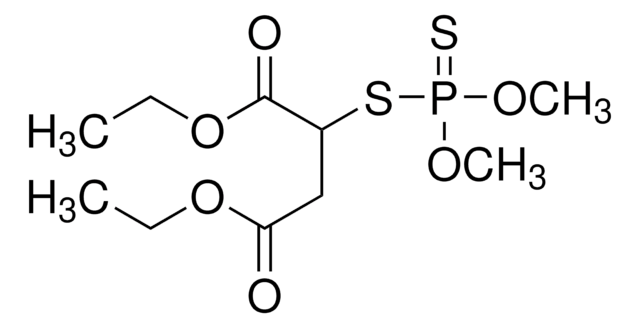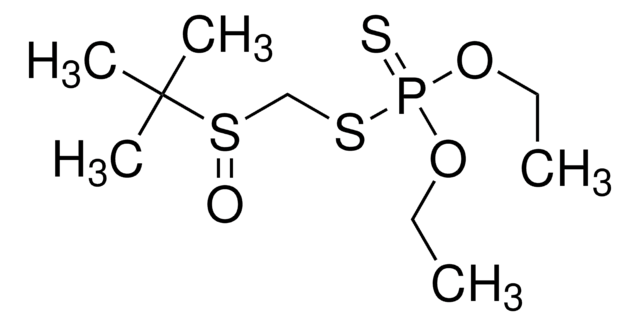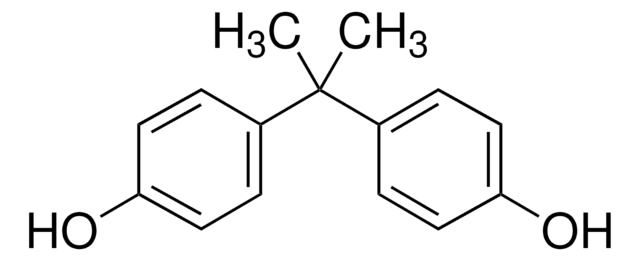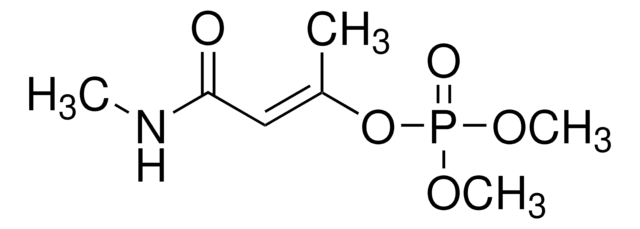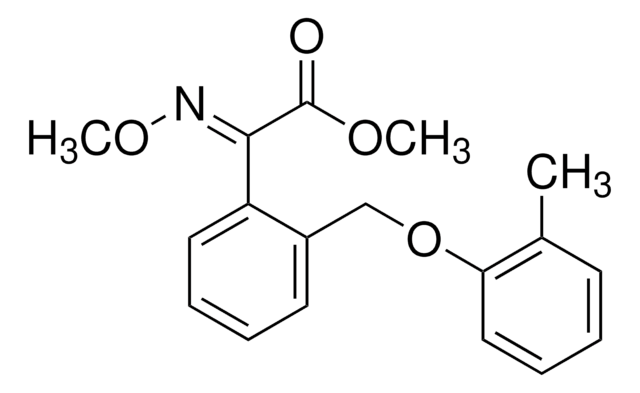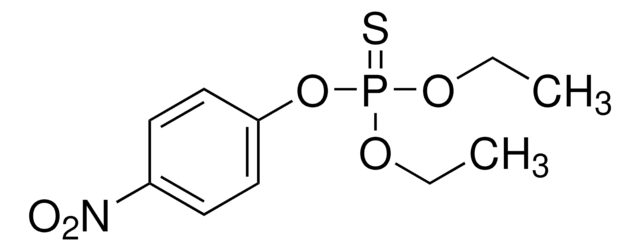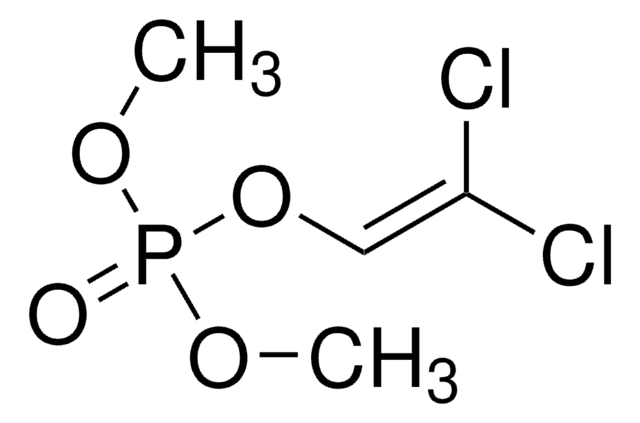About This Item
Recommended Products
grade
analytical standard
Quality Level
product line
PESTANAL®
shelf life
limited shelf life, expiry date on the label
technique(s)
HPLC: suitable
gas chromatography (GC): suitable
application(s)
agriculture
environmental
format
neat
storage temp.
2-8°C
SMILES string
CCOP(=S)(OCC)SCSC(C)(C)C
InChI
1S/C9H21O2PS3/c1-6-10-12(13,11-7-2)15-8-14-9(3,4)5/h6-8H2,1-5H3
InChI key
XLNZEKHULJKQBA-UHFFFAOYSA-N
Looking for similar products? Visit Product Comparison Guide
General description
Terbufos is not approved for its use in the European Union.
Maximum residue levels (MRLs) have been set according to Reg (EC) No 149/2008 for Terbufos for various products of plant and animal origin 0.01 mg/kg.
Terbufos in its activated form irreversibly inhibits acetylcholinesterase (AChE), leading to the accumulation of acetylcholine, resulting in overstimulation of muscarinic and nicotinic receptors.
Application
- Protect and detect two thermolabile metabolites of terbufos, and simultaneously analyze terbufos and its metabolites in pepper and pepper leaf samples using GC-FPD
- Investigate photocatalytic degradation of terbufos in aqueous suspensions using titanium dioxide (TiO2) as a photocatalyst
- Study the effects of different doses of terbufos on the decomposition process and the scavenger flies assemblages composition in Wistar rat carcasses
- Measure adsorption of two commonly used organophosphorus pesticides, Phorate and Terbufos onto four tropical soils
- Examine the acute effects of terbufos and its major oxidation products, alone and in combination with each other or with atrazine, on Ceriodaphnia cf dubia
- Investigate the molecular mechanisms of genotoxicity in HepG2 cells and zebrafish embryos following exposure to terbufos, fenthion, or combinations of these pesticides
Legal Information
Signal Word
Danger
Hazard Statements
Precautionary Statements
Hazard Classifications
Acute Tox. 1 Dermal - Acute Tox. 2 Oral - Aquatic Acute 1 - Aquatic Chronic 1
Storage Class Code
6.1A - Combustible, acute toxic Cat. 1 and 2 / very toxic hazardous materials
WGK
WGK 3
Flash Point(F)
Not applicable
Flash Point(C)
Not applicable
Personal Protective Equipment
Choose from one of the most recent versions:
Already Own This Product?
Find documentation for the products that you have recently purchased in the Document Library.
Customers Also Viewed
Protocols
analytical standard; Tokuthion, technical grade, pkg of 50 mg; Crotoxyphos; Phorate; Azinphos-ethyl; Diazinon; Azinphos-methyl; Demeton-O; Dimethoate; Chlorpyrifos-methyl
Our team of scientists has experience in all areas of research including Life Science, Material Science, Chemical Synthesis, Chromatography, Analytical and many others.
Contact Technical Service


